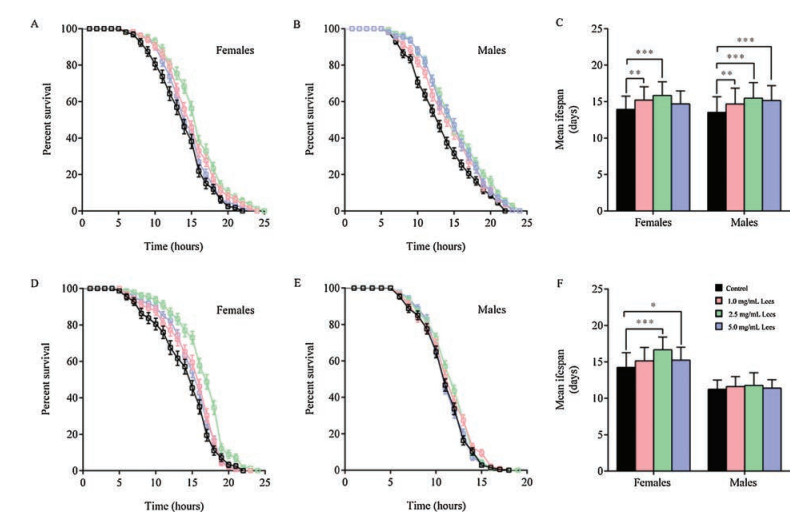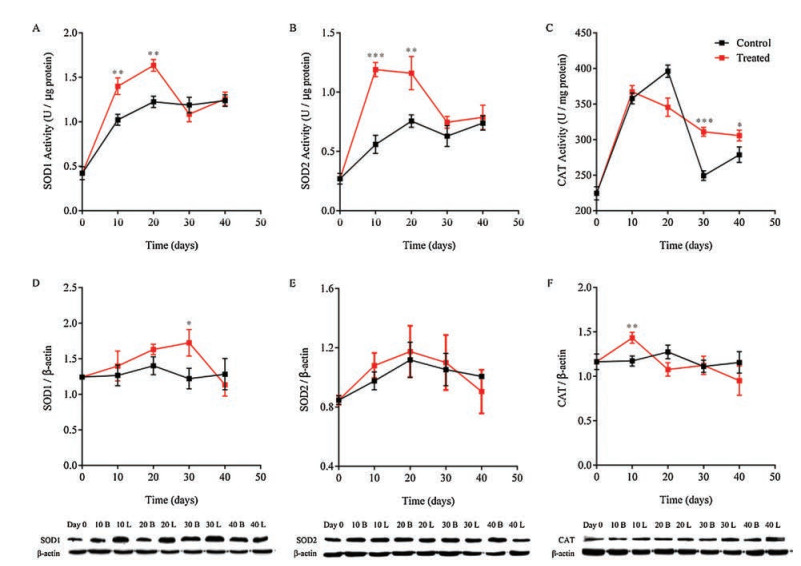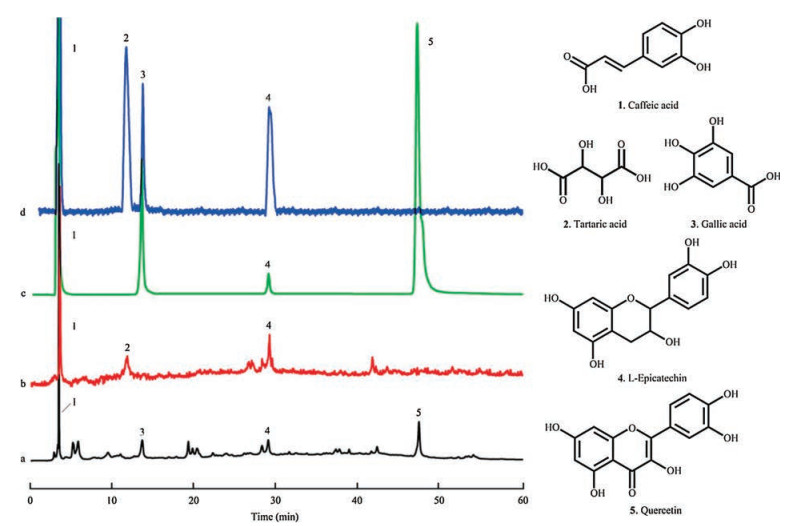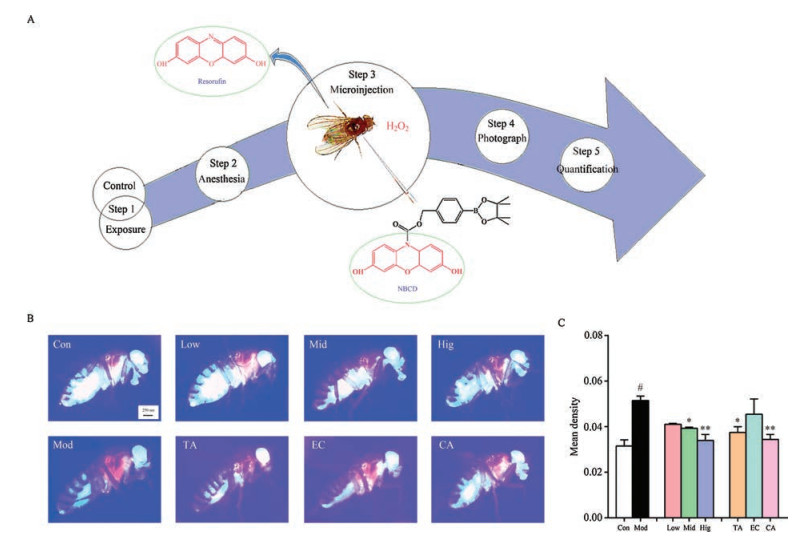-
[1]
T. Ishikawa, S. Tamaki, T. Maruta, S. Shigeoka, Adv. Exp. Med. Biol. 979(2017) 47.
doi: 10.1007/978-3-319-54910-1
-
[2]
M. Schieber, N.S. Chandel, Curr. Biol.:Cb 24(2014) R453-R462.
doi: 10.1016/j.cub.2014.03.034
-
[3]
X. Liao, Y.A. Liu, Curr. Org. Chem. 17(2013) 654-669.
doi: 10.2174/1385272811317060008
-
[4]
A.A. Karaçelik, M. Küçük, Z. İskefiyeli, et al., Food Chem. 175(2015) 106-114.
doi: 10.1016/j.foodchem.2014.11.085
-
[5]
J. Damašius, P.R. Venskutonis, V. Kaškoniene, A. Maruška, Analyt. Methods 6(2014) 2774-2779.
doi: 10.1039/c3ay41703d
-
[6]
J.D.V.D. Merwe, E. Joubert, M. Manley, et al., Food Chem. Toxicol. 50(2012) 808-815.
doi: 10.1016/j.fct.2011.11.018
-
[7]
G.G. Guilbault, Anal. Chem. 40(1968) 459R-471R.
-
[8]
B. Qi, Y.Z. Zhu, M. Hu, Y. Zhang, X. Tang, Anal. Lett. 34(2001) 1247-1254.
doi: 10.1081/AL-100104150
-
[9]
I. Navarrogonzález, R. Gonzálezbarrio, V. Garcíavalverde, et al., Int. J. Mol. Sci. 16(2014) 805-822.
doi: 10.3390/ijms16010805
-
[10]
K.A. Lukyanov, Nat. Methods 3(2006) 281-286.
doi: 10.1038/nmeth866
-
[11]
M. Gutscher, M.C. Sobotta, G.H. Wabnitz, et al., J. Biol. Chem. 284(2009) 31532.
doi: 10.1074/jbc.M109.059246
-
[12]
K.N. Markvicheva, D.S. Bilan, N.M. Mishina, et al., Biorg. Med. Chem. 19(2011) 1079-1084.
doi: 10.1016/j.bmc.2010.07.014
-
[13]
D.S. Bilan, L. Pase, L. Joosen, et al., ACS Chem. Biol. 8(2013) 535-542.
doi: 10.1021/cb300625g
-
[14]
K. Liu, H. Shang, X. Kong, et al., Biomaterials 100(2016) 162.
doi: 10.1016/j.biomaterials.2016.05.029
-
[15]
H.M. Cochemé, A. Logan, T.A. Prime, et al., Nat. Protoc. 7(2012) 946-958.
doi: 10.1038/nprot.2012.035
-
[16]
Z. Han, X. Liang, X. Ren, L. Shang, Z. Yin, Chem-Asian J. 11(2016) 818-822.
doi: 10.1002/asia.v11.6
-
[17]
Y.X. Zou, M.H. Ruan, J. Luan, et al., J. Nutr. Health Aging 21(2016) 1-6.
-
[18]
L.M. De Aguiar, F.H. Figueira, M.S. Gottschalk, R.C. Da, Comp. Biochem. Phys. C 185-186(2016) 94-101.
-
[19]
P.B. Bagatini, L. Saur, M.F. Rodrigues, et al., Invert. Neurosci. 11(2011) 43.
doi: 10.1007/s10158-011-0116-3
-
[20]
X. Sun, T. Komatsu, J. Lim, et al., Aging Cell. 11(2012) 783-793.
doi: 10.1111/j.1474-9726.2012.00842.x
-
[21]
C. Peng, H.Y. Chan, Y. Huang, H. Yu, Z.Y. Chen, J. Agric. Food Chem. 59(2011) 2097-2106.
doi: 10.1021/jf1046267
-
[22]
J. Dasgupta, S. Subbaram, K.M. Connor, et al., Antioxid. Redox Signal. 8(2006) 1295-1305.
doi: 10.1089/ars.2006.8.1295
-
[23]
G. Patro, S.K. Bhattamisra, B.K. Mohanty, H.B. Sahoo, Pharm. Res. 8(2016) 22.
-
[24]
M.V. Baroni, R.D.D.P. Naranjo, C. García-Ferreyra, S. Otaiza, D.A. Wunderlin, LWT Food Sci. Technol. 47(2012) 1-7.
doi: 10.1016/j.lwt.2012.01.015
-
[25]
E. Kurin, P. Mučaji, M. Nagy, Molecules 17(2012) 143369-14348.
-
[26]
Y. Niu, L. Yin, S. Luo, et al., Phytochem. Anal. 24(2013) 59-68.
doi: 10.1002/pca.v24.1
-
[27]
J.Hong, J.Maguhn, D.Freitag, A.Kettrup, FreseniusJ.Anal.Chem.361(1998)124-128.
doi: 10.1007/s002160050847
-
[28]
N. Li, Y. Liu, S. Li, et al., Mod. Phys. Lett. B 31(2017) 1750148.
-
[29]
Z. Sroka, W. Cisowski, Food Chem. Toxicol. 41(2003) 753-758.
doi: 10.1016/S0278-6915(02)00329-0
-
[30]
S.Z. Gorjanović, M.M. Novaković, N.I. Potkonjak, D.Z. Suznjević, J. Agric. Food Chem. 58(2010) 4626.
doi: 10.1021/jf100022e
-
[31]
A.V. Peskin, A.G. Cox, P. Nagy, et al., Biochem. J. 432(2010) 313-321.
doi: 10.1042/BJ20101156
-
[32]
N.E. Gislason, B.L. Currie, A.L. Waterhouse, J. Agric. Food Chem. 59(2011) 6221-6226.
doi: 10.1021/jf200115y
-
[33]
M. Wołonciej, E. Milewska, W. Roszkowska-Jakimiec, Postepy. Hig. Med. Dosw. 70(2016) 1483.
doi: 10.5604/17322693.1229074
-
[34]
M.M. Cals-Grierson, Patent, WO0182929, 2001.
-
[35]
Y. Steffen, T. Schewe, H. Sies, Biochem. Biophys. Res. Commun. 331(2005) 1277-1283.
doi: 10.1016/j.bbrc.2005.04.035

 Login In
Login In







 DownLoad:
DownLoad:


